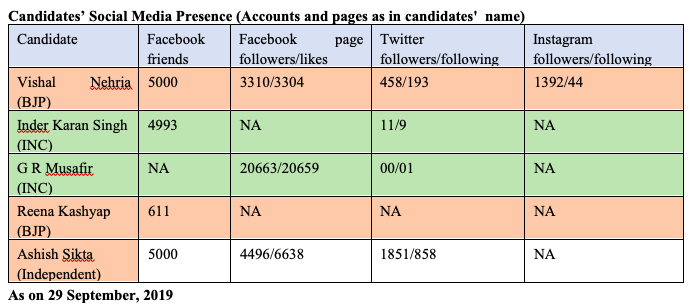Social media has emerged as a new outlet for politicians to connect with their voters. Social media not only has potentially minimized politicians’ reliance on mainstream media but has also acted as an empowering tool for a candidate having no political background and finances to buy space in mainstream media. Bhartiya Janta Party (BJP), a leading political party in India, swept into power in two consecutive parliamentary elections i.e. in 2014 and 2019. BJP’s success in the general elections is attributed in part to the efforts that the party’s IT cell has put in managing social media platforms. Similarly, there are evidences which support the claim that social media played a key role in forming (manipulating) British citizens’ opinion in favor of Brexit. The Arab Spring, as some political communication scholars note, would have not made its presence felt globally had the revolutionaries not used social media platforms to raise their voices.
In this high time of social media, an electoral candidate fighting elections having no or very little social media presence is an unimaginable political occurrence. But this is the reality of the ongoing by-elections for two assembly seats in Himachal Pradesh. The candidates who have been fielded by both the parties are less innovative and active in using social media platforms. The young politicians’ low presence on social media, even after the fact that 53 percent of state’s population use smartphones, (Cyber Media Research, a market intelligence firm tracking the technology sector 2018) is thought-provoking.

Gangu Ram Musafir, former Assembly Speaker whom Indian National Congress (INC) has fielded from Pachhad constituency of Sirmour district, seems to have no Twitter and Instagram presence. However, there is a Facebook page with the username ‘GRMusafir’ which has more than 20 thousand followers. The page is frequently updated, as checked on 29 September, 2019. To reach this conclusion ‘gangu ram musafir’ ‘GR Musafir’, ‘Gangu R Musafir’ keywords were used for search purpose on Facebook, Instagram and Twitter.
Similarly, Reena Kashyap who is BJP’s candidate from the same constituency is unavailable on Instagram and Twitter. However, the candidate seems to have an unverified Facebook account. But this Facebook account has a friend list which contains a meagre 611 friends as on 29th September, 2019, the date Kashyap’s candidature was declared. It is interesting to note that Reena Kashyap is also the co-convener of BJP’s Mahila Morcha IT Cell.
BJP’s Ashish Sikta from the same constituency who lost his candidature to her seems to be comparatively more active on social media. A Facebook account with user name AshishSikta’s has matured as the friend count of the account has reached the five thousand mark. A Facebook page with the same name is followed by nearly five thousand people. There is also a Twitter account with the same user name where has two thousand followers and the account is quite frequent updated. After being denied the ticket, his supporters has created Facebook pages and groups to express their disagreement and anguish. The page ‘We Support Ashish Sikta’ has gained more than 700 followers within 24 hours of when the party declared Reena Kashyap as its candidate.
The social media situation in the constituent assembly of Dharamshala is not quite different. Vijay Inder Karan, the INC candidate has no Instagram account and is almost inactive on Twitter. A Facebook account on his name has 4993 friends as on 29th September, 2019. Keyword search with ‘VIKaran’ Vijayinderkaran’, ‘vijayikaran’ could not retrieve any additional page or account. On the other hand, BJP’s candidate from Dharamshala Vishal Nehria is comparatively more active on social media platforms. An account on Nehria’s name has reached the five thousand Facebook friend mark and a page with similar name is followed by more than three thousand people. A Twitter handle with the user name @VishalNehria has more near five hundred followers. Vishal Nehria as an exception has an active Instagram account where he is followed by nearly fifteen hundred people and as on 29th September, 2019 the account has 56 posts.
Social media is pervasive and its political potential is vast. It may not necessarily assure an electoral win for a candidate but may provide him/her with a platform where he/she can bypass mainstream media and directly communicate with his/her potential voters. By using social media, the candidate can also minimize propaganda-agenda setting risk which mostly is led by mainstream media. Himachal’s young politicians should opt for a less ignorant attitude towards this medium and adapt to this new social media ecosystem. Moreover political parties should also motivate its workers to explore the potential of this medium.
Sandeep Sharma is a research scholar in communication studies pursuing his Ph.D in the subject at Central University of Himachal Pradesh, Kangra.



